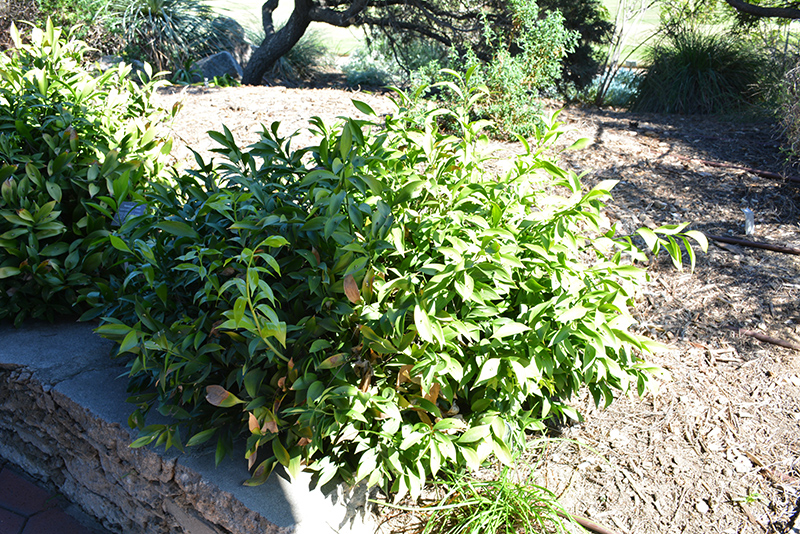Spineless Butcher’s Broom
Description
A distinct, compact evergreen sub-shrub with small, tough leaf-like structures that are actually a form of flattened stem; tiny flowers at the axils are followed by red fruit; drought and shade tolerant, great as an understory groundcover
Landscape Attributes
Spineless Butcher's Broom is a multi-stemmed evergreen shrub with a ground-hugging habit of growth. Its average texture blends into the landscape, but can be balanced by one or two finer or coarser trees or shrubs for an effective composition.
Spineless Butcher's Broom is recommended for the following landscape applications;
Planting & Growing
Spineless Butcher's Broom will grow to be about 18 inches tall at maturity, with a spread of 24 inches. It has a low canopy. It grows at a slow rate, and under ideal conditions can be expected to live for approximately 10 years. This is a dioecious species, meaning that individual plants are either male or female. Only the females will produce fruit, and a male variety of the same species is required nearby as a pollinator.
This shrub does best in full sun to partial shade. It is very adaptable to both dry and moist locations, and should do just fine under typical garden conditions. It is not particular as to soil type or pH. It is highly tolerant of urban pollution and will even thrive in inner city environments. This species is not originally from North America.
Spineless Butcher's Broom makes a fine choice for the outdoor landscape, but it is also well-suited for use in outdoor pots and containers. Because of its spreading habit of growth, it is ideally suited for use as a 'spiller' in the 'spiller-thriller-filler' container combination; plant it near the edges where it can spill gracefully over the pot. Note that when grown in a container, it may not perform exactly as indicated on the tag - this is to be expected. Also note that when growing plants in outdoor containers and baskets, they may require more frequent waterings than they would in the yard or garden. Be aware that in our climate, this plant may be too tender to survive the winter if left outdoors in a container. Contact our experts for more information on how to protect it over the winter months.

